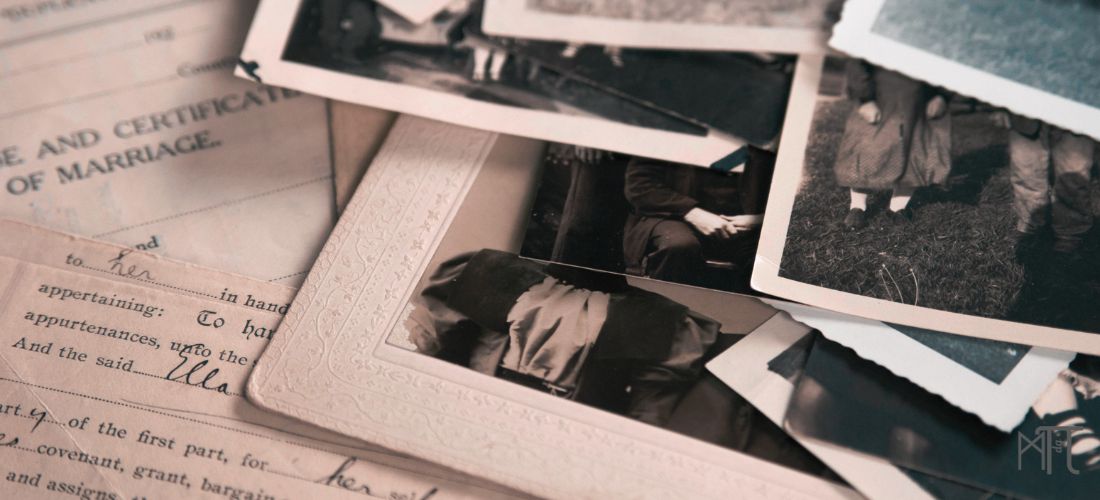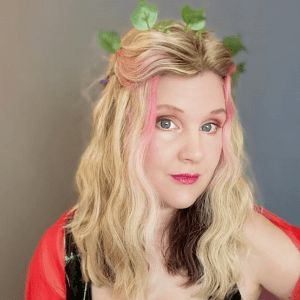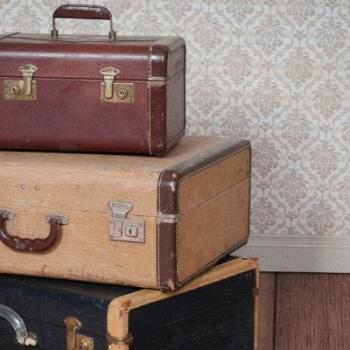
When you combine ancestor work with psychology it becomes beautifully multifaceted. Exploring the role of the scapegoat within your ancestry can be powerful and transformative.
What is a scapegoat?
Often (but not necessarily) found within a group setting, the scapegoat is passed the blame for everything that’s gone wrong. They’re handed the responsibility and guilt for all problems, sometimes even when it takes a little story shifting to achieve.
You might have heard of scapegoating in association with narcissism, and indeed the creation of a scapegoat is a tool often used by those with narcissistic personality disorder or narcissistic traits.
But the creation of a scapegoat doesn’t automatically mean the presence of a narcissist.
The rest of the group need to collude to allow it to happen.
Frantically searching for “the narcissist” who caused all the trouble can be a form of scapegoating itself.
The scapegoat can also internalise the accusations. They can become a problem by acting out. The developmental conditions which create a personality that’s easier to scapegoat can also manifest as people pleasing. The scapegoat therefore lives up to their new role.
Why does it show up in transgenerational work?
Dysfunctional families use a scapegoat to allow them to continue to function as a solid, securely attached unit by transferring negative emotions like anger and resentment onto one person. In plain English, it’s easier to have just one person in a group you’re unhappy with than hating everyone. And this is especially true when as a family you have trauma around attachment.
With a scapegoat, the rest of the family can bond, they can repress their own guilt and shame and not risk losing each other in the process.
This isn’t only found in family groups. We see scapegoating in cultural groups, religious groups, and even in work settings.
But within ancestral work, the scapegoat isn’t writing memoirs.
They’re conveniently silenced because they’re part of the stories the rest of the family tell.
The blame is still there though. And therefore, the wounds left by scapegoating can appear in energy blocks, within tension, and in redirected guilt and shame felt in descendants down the generations. It can manifest as a coping tactic in behaviour patterns.
Okay, but the scapegoat was a bad person anyway, right?
Not always.
In fact, not usually.
The scapegoat is often chosen because they’re different. And because they’re strong enough to carry the burden of blame for the rest of the dynamic.
They may think differently to other members. Or they may have found their strength because of developmental trauma; self-work; or spiritual growth. Their strength may come from protection of others, possibly from being parentified as a child.
The scapegoat is chosen because they question, and therefore challenge, the status quo.
Look at British royalty right now. Who is the scapegoat? And which members of the family with decidedly murkier pasts are conveniently forgotten?
In current groups the burden of being the scapegoat can shift between people, but in ancestral scapegoating it’s more likely to concentrate on one person.
We don’t need to go searching for them.
If you have a scapegoat in your ancestry, you’ll already know who they are.
You’ll have heard the stories.
Maybe you won’t really know why or what that person actually did. That’s typical of scapegoating.
But you’ll know who they are.
When you release the scapegoat energy you allow that pattern to be broken and free the frozen tension associated with it.
It’s important to see that energy as melting, as neutralised and freed for repurposing rather than simply being “let out”.
When you approach the situation to offer healing, do so without blame or bias. Offer unconditional love and understanding for all involved.
Although curiosity can encourage us to look for the reasons, sometimes this isn’t helpful either. We don’t want to become a vessel for continuing the same argument and adding more energy to the blockage.
It can also be better not to insist specific ancestors step forward to “fix” the issue.
Instead, reach out to the ancestral line and state your intention allowing those who wish to come forward to do so. Ask those who have, to hand us the energy they’ve been holding onto.
If the scapegoat comes forward, we ask them to hand us back the blame they’ve been given which is not their own. They give up the energy which was projected onto them.
All the ancestors hand us the energy associated with the scenario which they’ve been carrying. Then we disperse it. We melt. We neutralise, and we repurpose freeing them from their burden and as we do so we allow the energy to flow again within our line.
If the ancestral scapegoat doesn’t engage, we instead reach within ourselves.
We free the energy from inside of us, the energy collected from the stories we’ve been told and from the patterns we’ve inherited.
And we melt and repurpose that instead.
This can be done within a ritual setting. I now also do this for clients as part of a hypnotherapy session, either included in a series of ancestral healing we’re completing, or if they’ve been doing their own work as a stand-alone session.
It’s a deeply moving piece of work which is inspirational to be a part of.
I regularly run courses and events working with the Ancestors, click here to see what’s coming up

















